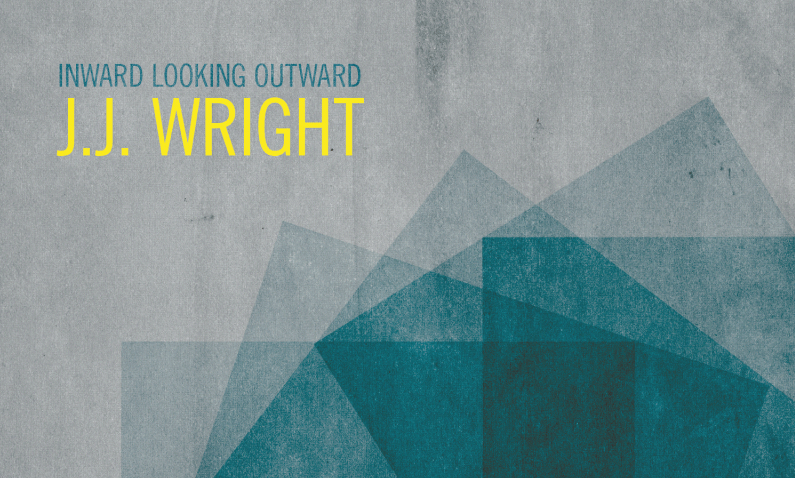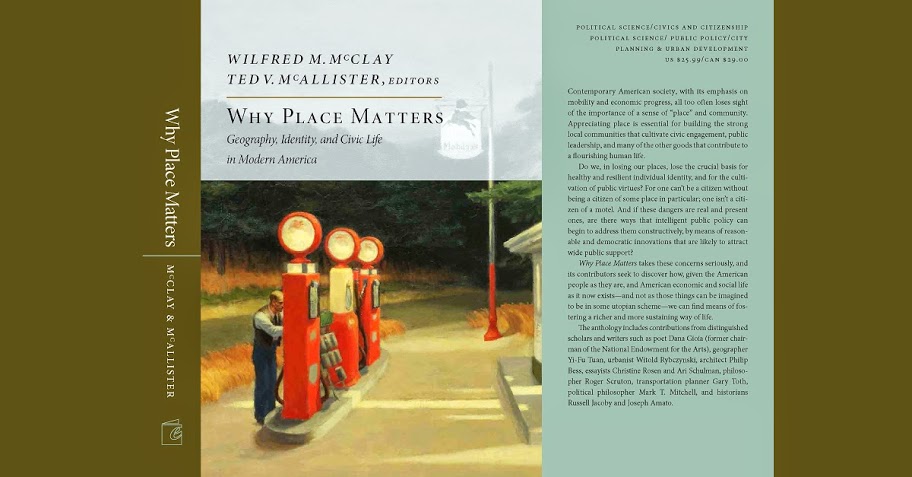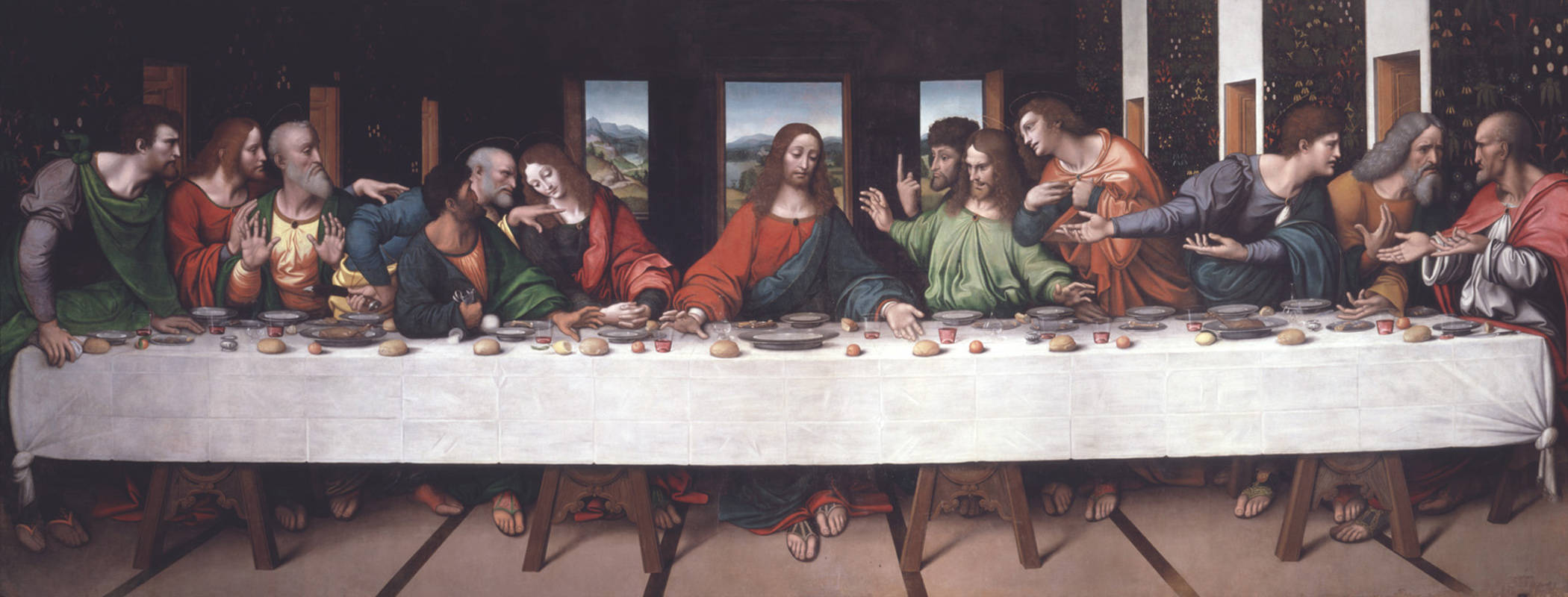Being a Christian artist—or an artist who happens to be Christian, or however you want to taxonomize it —can make you feel a bit like Odysseus. Caught between the Scylla of earnest preachiness and the Charybdis of vague nothingness, how do you create art that is meaningful but not pedantic, rooted in a Christian vision but not overbearing? Visual artists and writers must struggle with this continually, but perhaps the answer is a little easier for composers, whose chosen medium (assuming you write music without lyrics) comes with a few layers of abstraction built in. J.J. Wright’s refreshing new jazz album Inward Looking Outward provides a solid example of a musician leading the listener on a journey without holding his or her hand, allowing for the wildness and wonder to come through.
Aside from a set of interspersed cover songs (and one standalone original, “Consolations”), the album consists entirely of a song cycle of sorts, five pieces bearing the title JTC with Roman numerals to distinguish them. The numerals indicate the order of composition, but Wright has rearranged them to better tell his story. JTC stands for Journey Toward Christ, and taken as a whole the songs do suggest something of a journey. But it’s the toward that’s key here: not a journey to Christ, with an endpoint and a goal, but a continuous toward, a ceaseless “further up and further in,” to borrow from C.S. Lewis.
The five tracks of JTC depict something like the soul’s movement towards God. The album’s first track, “JTC II,”hums with the restlessness of the untethered heart. “JTC I,” “IV,”and “V”continue the development of that theme, punctuated with some welcome passages of relief. “JTC III,”the last of the cycle, moves with the slow peacefulness of a soul at rest in Christ. Since this is jazz, the portraits that are on display are oblique and abstract, protecting the whole endeavor from seeming forced or trite. Though the framing device does add an extra layer of meaning, these songs stand well on their own. They are interesting and well structured, but very accessible to those for whom jazz carries an intimidating association.
This accessibility comes partly from the stripped down approach Wright takes to his music. His band is a simple trio: just Wright on piano, Nate Wood on drums, and Ike Sturm on bass. This rhythm section focus gives Wright’s music a percussive emphasis (highlighted by Wood’s excellent, though sometimes overwhelming, drumming). Wright carves thoughtful melodies into this rhythmic space, but the beat prevails as the through line for these songs. Even when the chords get funky, the listener has a rhythmic life vest to carry the ear along.
I am not enough of an expert to detect all of the diverse influences that show up in Inward Looking Outward, but one main one sticks out to my ear: Thelonious Monk. Perhaps it’s obvious to connect a piano-led trio to one of the greatest pianists in jazz history, but the similarities extend far beyond the instrument. The more raucous pieces on the album, such as the opener “JTC II” and the mid-album standout “JTC IV,” have the energy and playfulness that Monk brought to his work. Wright even throws in an occasional chord that sounds out of place and jarring—a Monk standard. Meanwhile his slower tunes sound like Monk filtered through 19th-Century Hymnody. There’s a smoothness that feels plucked from some of the great old comfort hymns—“What a Friend We Have in Jesus” comes to mind—that gets leavened by a Monkian penchant for introverted, troubled soul searching. It’s a heady combination.
Wright, who studies Sacred Music at Notre Dame, lays claim to influences from a bit farther back in the church music tradition, namely figures such as Bach and Palestrina. This inspiration is most obvious on the album’s best track, Wright’s cover of Sufjan Stevens’s “The Transfiguration.” Wright enacts a marvelous transfiguration of his own on Stevens’s music. For nearly the first two minutes the piano plays solo, hinting at the melody in a style that imitates Bach’s keyboard works (it brings to my mind in particular the opening to “The Art of Fugue”). As the drums and bass come in, Wright slowly ratchets up the tension, raising the volume and complexity of the music simultaneously. It’s only in the last minute of the seven-minute track that we get the melody of “The Transfiguration” in a form recognizable to fans of the original, but from there to the end Wright and company unleash a grand, sweeping sound that will give you chills.
The other covers on the album are almost as good. There’s less transformation at work in Wright’s take on Jon Brion’s “Little Person” (from the Synechdoche, NY soundtrack), but that’s mostly because Brion’s soulful cabaret tune already fits so well into what Wright is going for. The words in the original, though not present in Wright’s cover, shed light on the theme of journeying. Here the soul is still adrift, longing for transcendence as yet unfulfilled: “I’m just a little person/One person in a sea/Of many little people/Who are not aware of me… Maybe somewhere far away/I’ll find a second little person/Who will look at me and say/I know you/You’re the one I’ve waited for.”
Wright closes the album in transcendent style, with a version of Phil Collins’s mid-80’s cheeser “Take Me Home” that elevates the earnest, borderline corny synth riffs of the original into a soaring picture of the soul’s ascent. After the sturm und drang of much of the album, the restlessness that persists in this human life, there’s a sense in “Take Me Home” of resting in grace, of waiting to be brought into the presence of Christ through the grace of Christ. Wright’s piano builds this feeling of homecoming, but it gets its full upward push thanks to Wood’s drumming, which is the last sound heard, pushing up into the heavens. The song—and all of Inward Looking Outward—is a welcome reminder that one day our hope will be complete and we will see reality face to face. For those of us still on our journey, though, it’s nice to have seers like J.J. Wright to give us glimpses, even if they come as through jazz darkly.
For more information on Wright and his album, visit jjwrightmusic.com or jjwright.
And listen here to the album’s cover of “The Transfiguration”
















